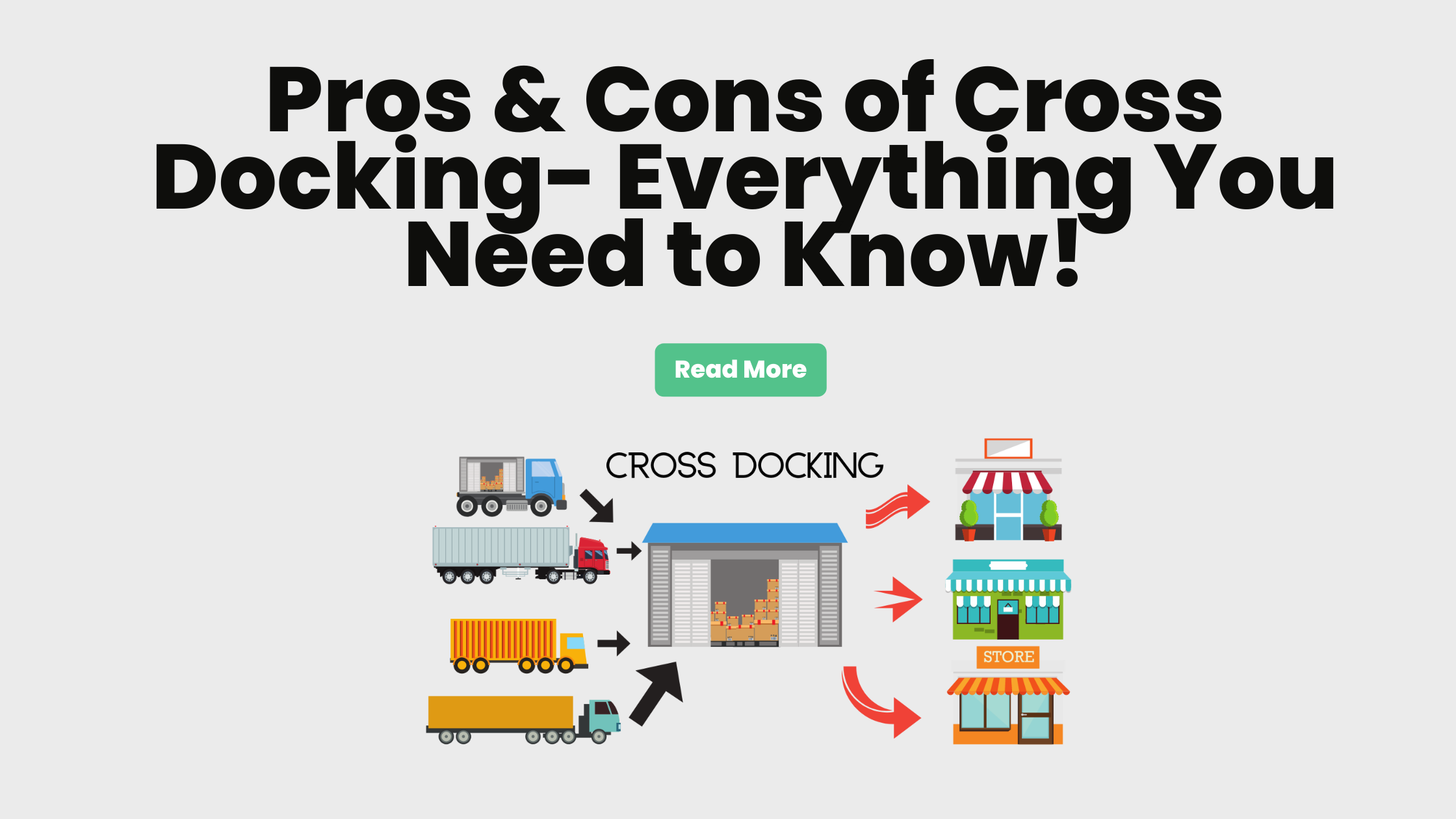What exactly does “cross-docking” mean?
The term “cross-docking” refers to distributing products in which commodities are received directly at a warehouse or distribution center. This kind of system is known as cross-docking. Products are not kept in storage but rather in a state of readiness where they are constantly ready to be transported to retail outlets. The actions of receiving and delivering goods need to be coordinated in such a way that there is harmony and rhythm. Cross-docking is a method used in the logistics industry that saves distribution expenses.
The four primary duties performed throughout warehouse operations are receiving, storing, collecting, and sending out orders. Specifically, the highest expense phases involve storing and managing orders. When the cross-docking form is filled out, it significantly reduces the amount of money spent on storage, and the amount of time spent at the cross-dock preparing shipments for delivery to consumers is reduced to one day or less.
Because there will not be any goods available in the warehouse, cross-docking means that rather than taking the goods from the warehouse for delivery, in this field, the goods must be transported from the supplier to the warehouse. This is because there will not be any goods available in the warehouse. However, cross-docking is only used when a firm on-time guarantee has been made to compensate for the risks involved with the increased lead time.
Pros of cross-docking
The most notable pros of cross-docking are:
Simple handling
Material handling is smoother. Cross-docking boosts efficiency and production. It improves in-motion labeling, measurement, verification, destination scanning, and more.
Lowers warehouse leasing or property expenses
Every firm pays a lot for a shop. Due to the high value of the items, they must be spacious to let trucks and vehicles in and out and secured 24/7.
Cross-docking eliminates most of these expenditures so you can swiftly transport items from A to B without renting a warehouse. Hiring a smaller facility to unload your vehicles will be cheaper than renting a whole holding.
Cuts staff expenses
Operating a warehouse is impossible. It takes several workers to carry items from containers to storage for safety. Managers must ensure the warehouse runs efficiently and has enough room for incoming cargo.
Cross-docking does not eliminate staff transportation but decreases the number needed for a rapid turnaround and assures client expenses and profits.
Ship quicker
Supplier efficiency depends on speed. Customers want fast delivery. Cross-docking reduces shipping time.
Cross-docking lets most items on the road within hours. Your customer will like this, especially because they can track their deliveries.
Reduces product handling
Breaking a box is the worst shipping blunder. They must pay the customer after delivery.
Accidents happen sometimes, but usually when warehouse workers use forklifts to move and store merchandise. Less handling reduces breakage. Cross-docking reduces product contact since conveyance is less essential. The supplier and truck carry the products right into the store.
Cons of cross-docking
Following are the cons of cross-docking
Conclusion
Cross-docking is the natural movement of items from the receiving area to the shipping zone inside the warehouse, with the least amount of dwell time and handling and storage time. Cross-docking uses shipments to save transportation expenses while lowering inventory holding costs. Cross-docking also shortens the order cycle time and improves the responsiveness and adaptability of the delivery system.
Read Our Recent blog posts:What’s The Difference Between Transport And Logistics?
Follow Eternity Logistics on Facebook


